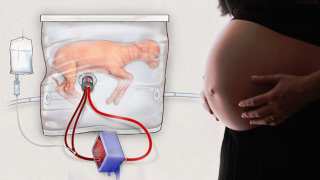Whilst most of us know that we need to take action and make changes to our livelihoods in order to reduce our impact on the environment, it’s sometimes hard to know where to start.
Actions such as reducing our carbon footprint through flying less is a great place to start, but if you only plan on taking an overseas holiday once a year, sometimes you might feel like you need to do more on a daily basis in order to make more of a difference.
You are what you eat
Because of this, many people’s attention also turns to what they eat – sourcing fruit and vegetables from farmers markets in an attempt to reduce food miles is a great choice to make. For those of us that also eat meat and are serious about reducing our impact on the environment, we also need to consider not only where our meat comes from, but also what it eats before it ends up on our plates.
In the US, the production of beef has a major impact on greenhouse gas emissions, with climate scientists suggesting that the current levels of beef production are just not sustainable at current levels as we move into the future.
Raising cattle for meat uses more resources, including land, water and fertilizers, than any other form of farming.
Current methods of beef production in the US require not only pasture for grazing, with this also being supplemented by grain and hay which is grown elsewhere and transported across the country. A new paper looks into the benefits of switching to a more sustainable style of farming, which only uses local pasture and agricultural by-products as food sources.
The paper, titled ‘A model for sustainable US beef production’ was published in the journal Nature Ecology and Evolution.
Agricultural by-products, including distillers’ grain, millfeed and citrus peel, are currently only used for around 10 percent of cattle fodder, a figure that could easily be increased. What is less simple is increasing reliance on local pasture and decreasing the use of other grains and hay. The authors suggest that the current level of grazing in the US could only support 45 percent of current beef production.
You might think that reducing the amount of grazing available to farmers would drastically cut beef production, but the authors of this study suggest that might not be the case at all.
Cutting pastureland in half would only reduce beef production to 43 percent, with the added benefit of, as suggested by the authors:
“allow repurposing high-quality croplands that are now being used to grow feed for industrial beef operations for other, more environmentally benign and nutritious food types.”
Small changes make a big difference
Whilst it might sound difficult to achieve, the authors of the paper suggest that that’s really not the case. Small changes from individuals can always have a larger net effect. As the authors explain, that could be as simple as reducing the amount of beef consumed each week: “If Americans reduced their mean beef consumption from the current ~460g per person per week to ~200g per person per week, the US beef industry could become environmentally sustainable by the narrow definition of this paper.”
So, as you ponder your New Year’s resolutions, perhaps reducing you or your family’s weekly beef intake could be one way to help our environment.
Top image: Beef in the supermarket. (Public Domain)







No comment